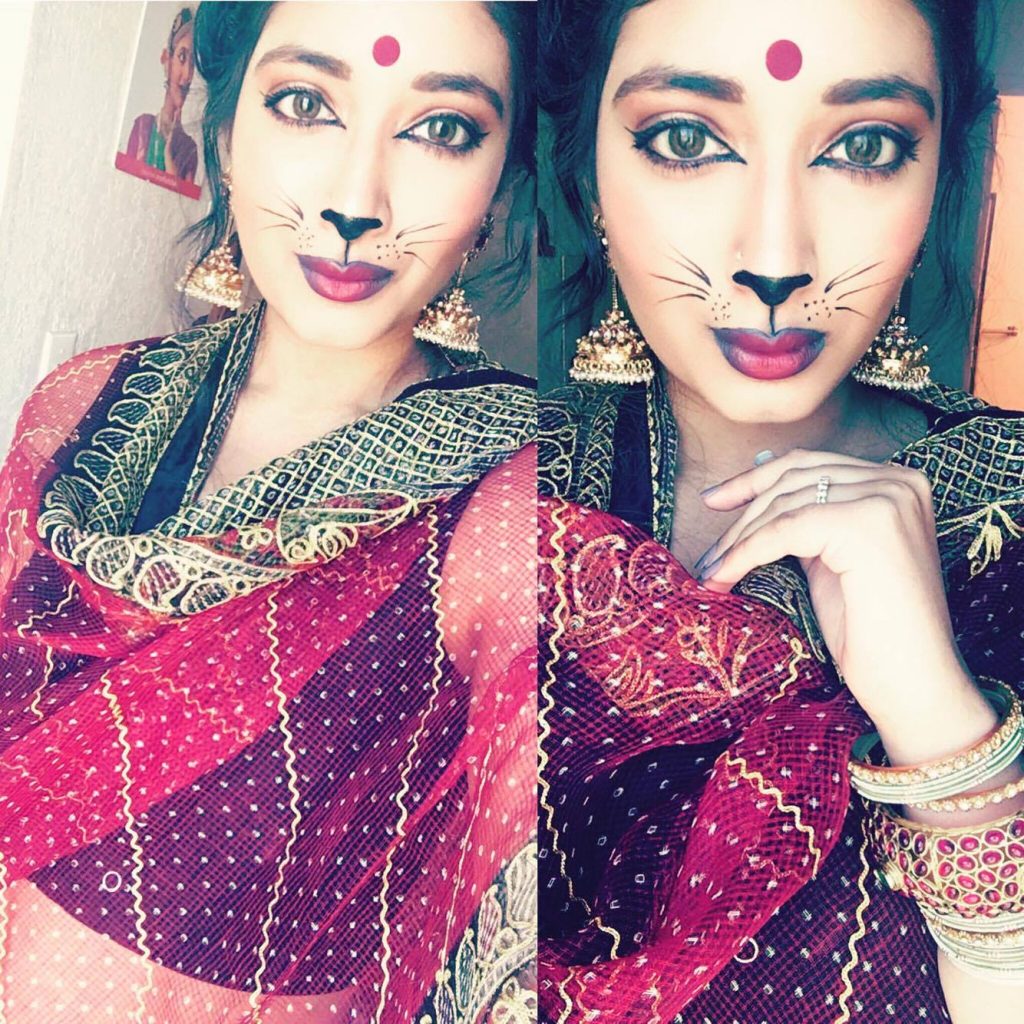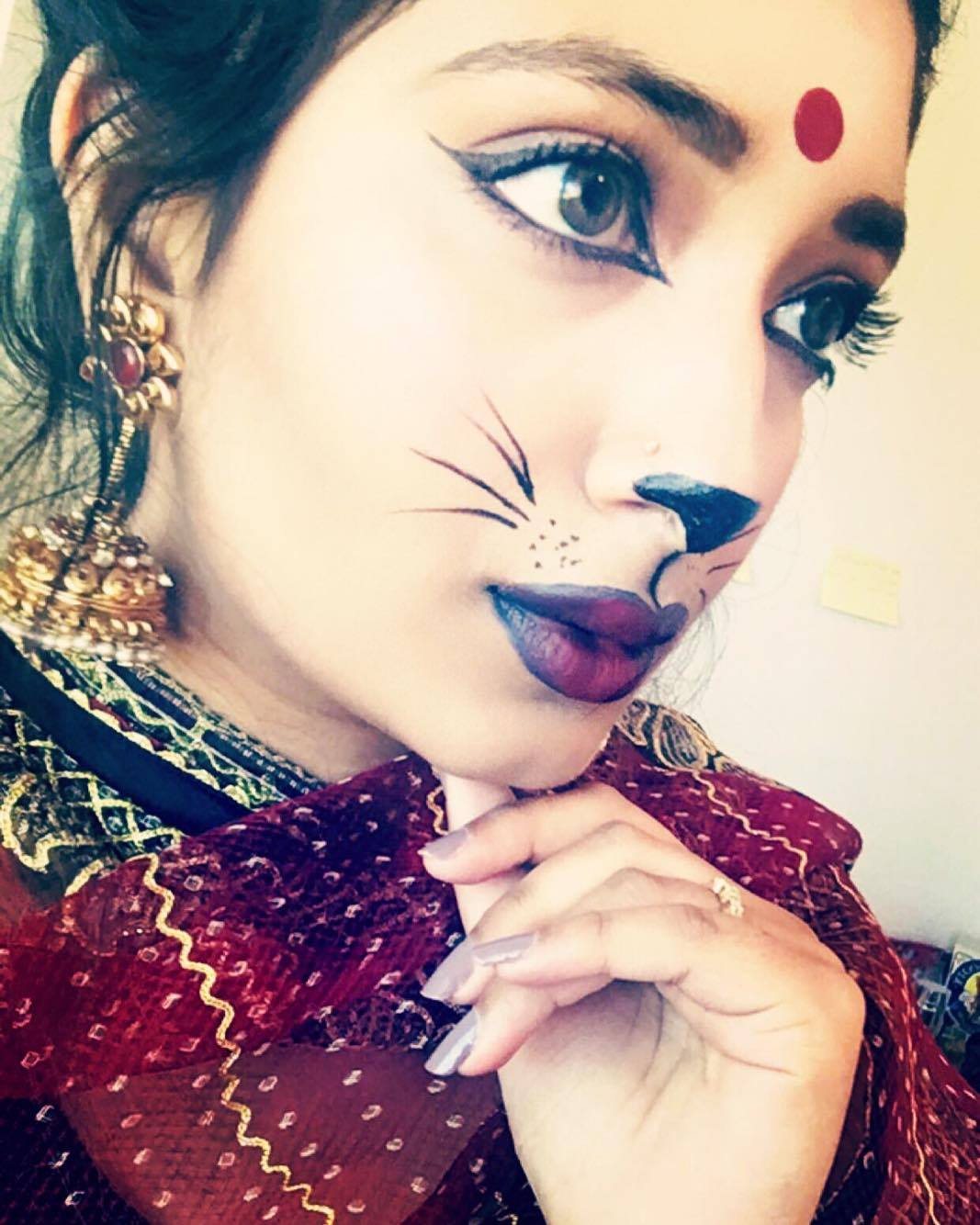
It’s that time of year again when us South Asian women get dolled up and glow like diyas. But, it’s also Halloween. And since Diwali and Halloween are a day apart this year, I thought it would be interesting to “combine the festivities”… And I don’t just mean making some Pumpkin Kheer.
I meant get your “Hallo-Wali” on. This is a one-of-a-kind hybrid look incorporating the eccentricity of Halloween with the elegance of Diwali. The look below was my exclusive get up for this “Hallo-Wali.” As a huge fan of the grumpy cat and red bindis I decided to merge both looks and pull a Desi-Billi.

Products and Make Up:
Kat Von Dee Tattoo Liner: I mainly relied on this product for the look, and think it’s the holy grail of all liners to create a dramatic cat eye as well as the nose and whiskers.
MAC Warm Eyeshadow Palette: I used the following two shades from this palette to intensify the look- Dark Burgundy, Black.
Benefit Ka Brow, Eyebrow Gel (Shade 3)
Rimmel Retro Glam Mascara: I used this mascara to layer my lashes and enhance the look.
NYX Primer Spray: I experimented with this spray for the first time and it leaves your skin feeling refreshed and smooth.
MAC Studio Fix Compact: This compact was used as a base. I usually wet my Kabuki style foundation brush with the NYX Dewy Setting Spray and work that into the compact and layer it onto my skin. It’s not only quick and easy but also has a beautiful matte finish.
Laura Mercier Setting Powder: This product was used to bake under my eyes, bridge of my nose, chin, and forehead.
Hoola Bronzer and NYX Contour Palette: For contour I alternated between these two products for strong, chiselled cheeks, and a sharp nose.
NYX Liquid Suede Cream Lipstick (Shade: Stone Fox): I contoured my lips using this shade, and following this step I used the Rimmel Provocalips in Kiss Me You Fool to add a red tinge.
Becca Highlighter (Shade: Moonstone Last): Time for the highlighter! And, in the spirit of Diwali I wanted to glow like a hundred diyas so I used Moonstone Last.
NYX Dewy Finish Setting Spray: To finish the look!
So, there is it BG’s- be a Desi-Billi to endorse an “east meets west” look this festive season!
 Aishwarya Ravi is originally from Bangalore, India. She is a graduate from Chapman University in Orange County, California. She is a fashion photographer with publications in three national newspapers and has worked with prominent International models. She plans on pursuing a career in fashion and hopes to one day be the Creative Director of a global fashion house. Follow her on Tumblr to see more of her personal work.
Aishwarya Ravi is originally from Bangalore, India. She is a graduate from Chapman University in Orange County, California. She is a fashion photographer with publications in three national newspapers and has worked with prominent International models. She plans on pursuing a career in fashion and hopes to one day be the Creative Director of a global fashion house. Follow her on Tumblr to see more of her personal work.




